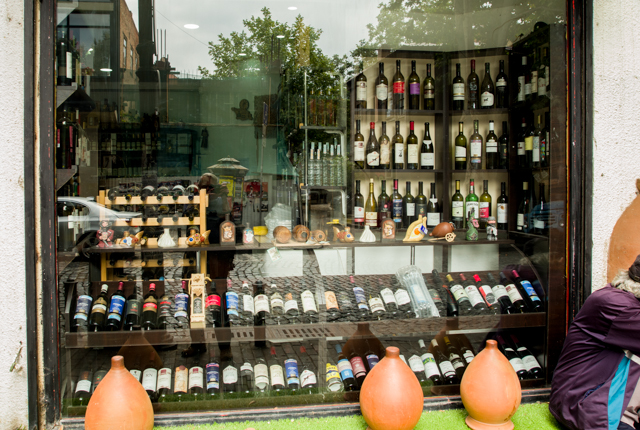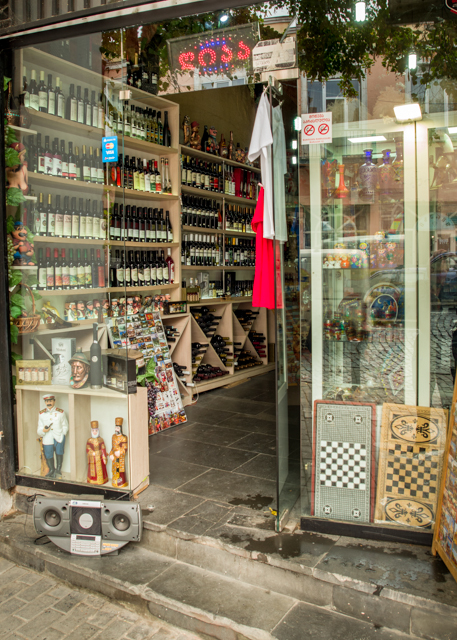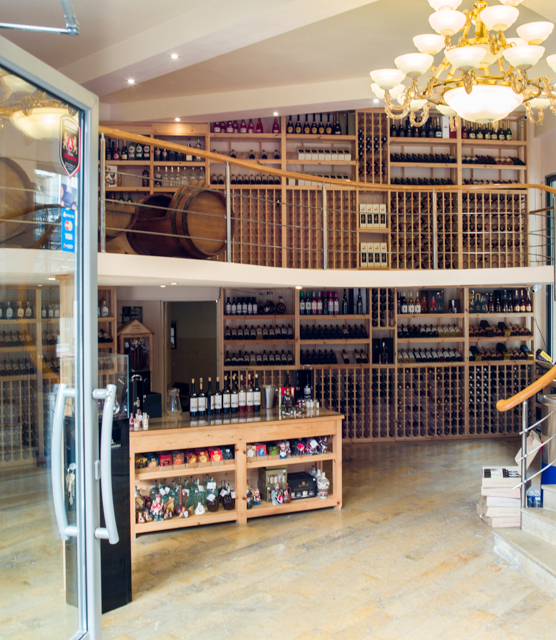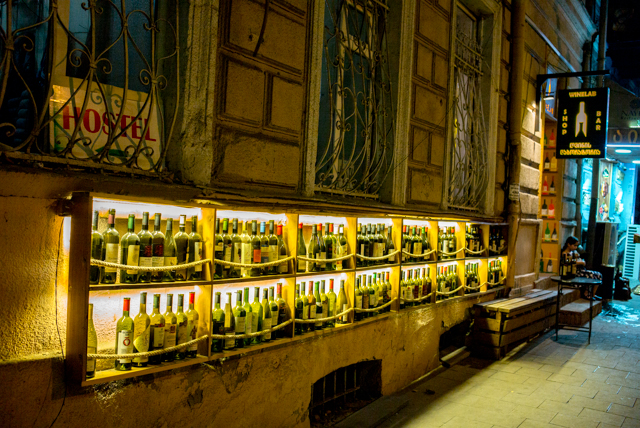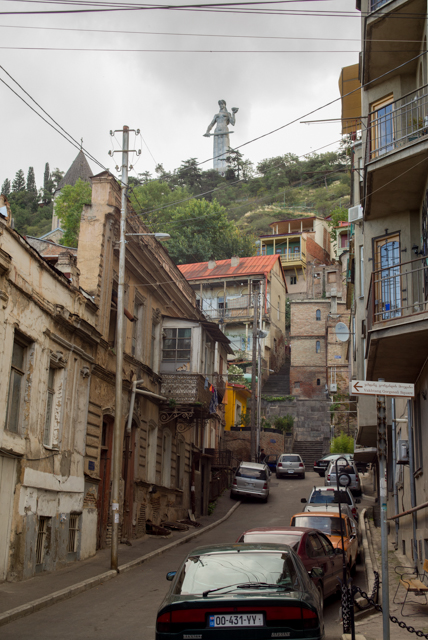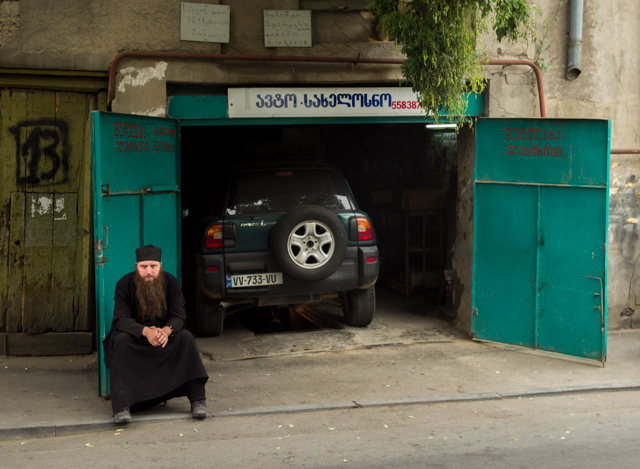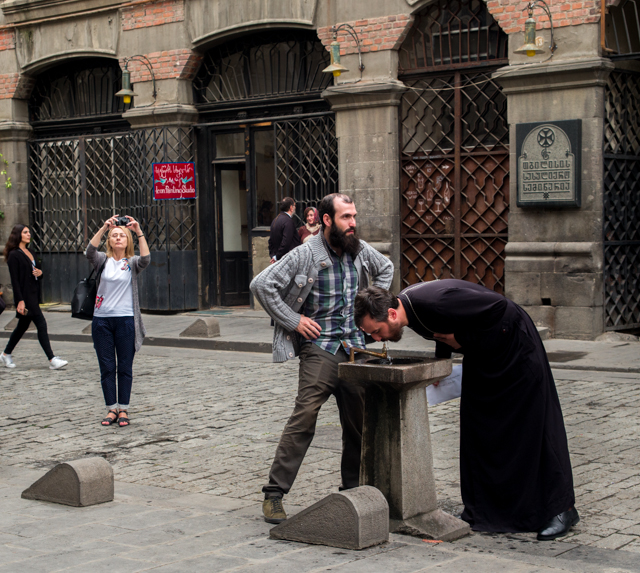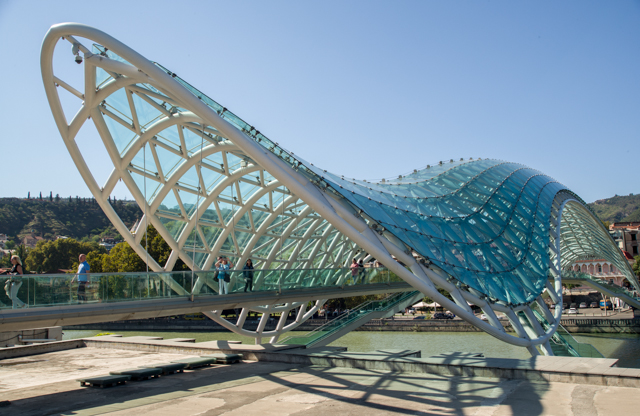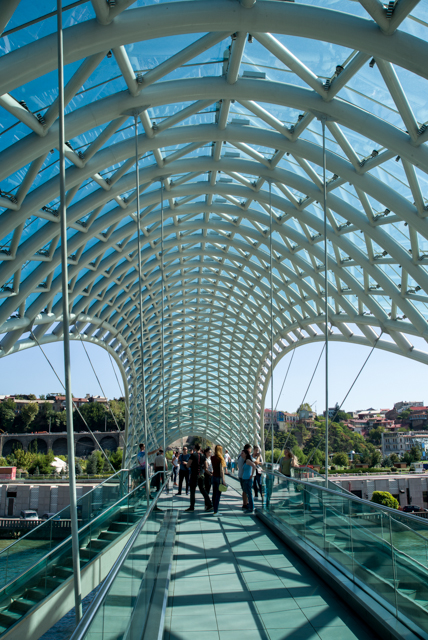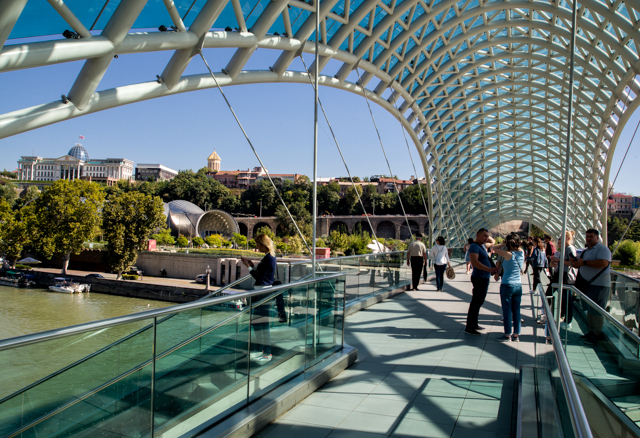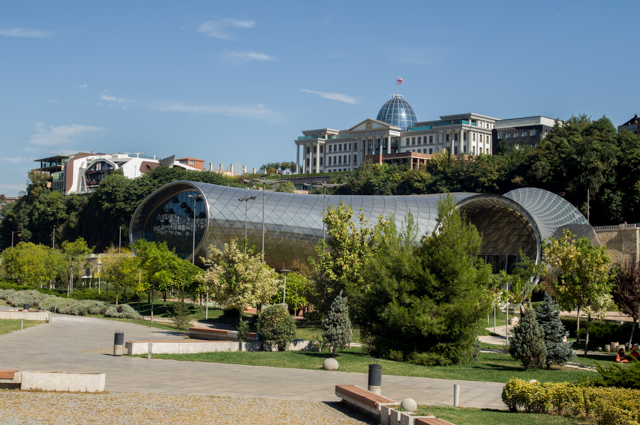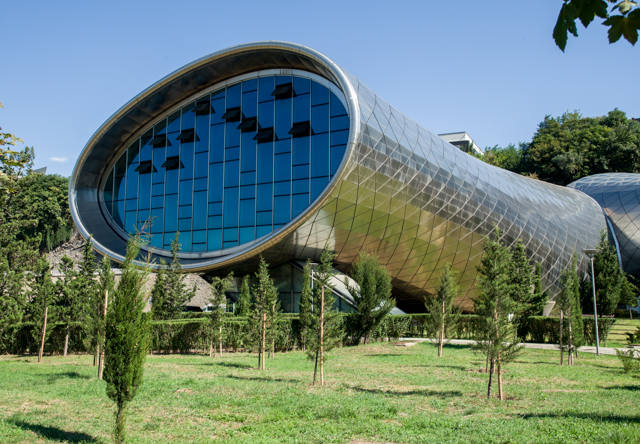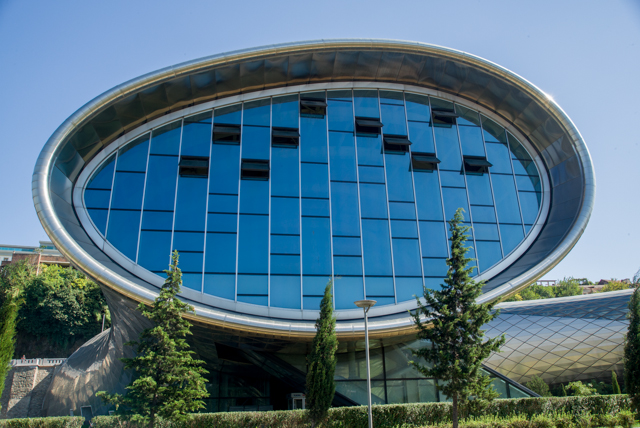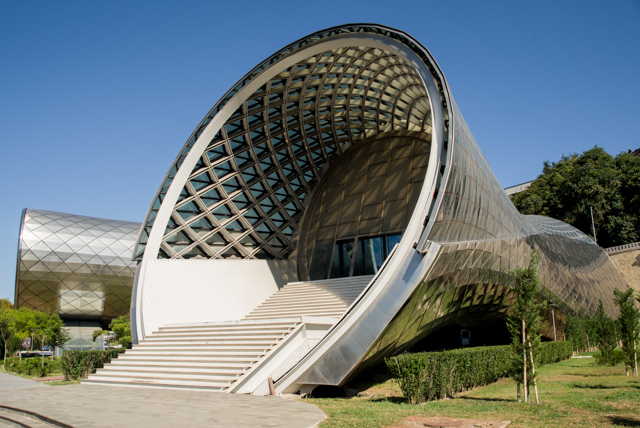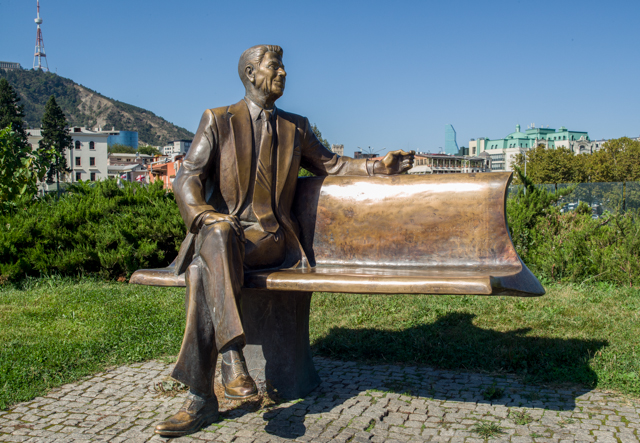As we returned along the tree-lined street from Meidan to Freedom Square following lunch at a small coffee shop, we were struck by the number of wine shops that we passed. Georgia produces a large annual volume of a great variety of wines.
Georgia takes great pride in the fact that it holds possibly the world's oldest wine-making site which dates to about 6000 BCE. Many Georgian wines are still made, both commercially and by Georgian families for their personal consumption, in the original way. It consists of filling giant amphorae with grape juice together with the grape skins and sometimes the stalks, then sealing them up and burying the great jars in the earth to allow their contents to ferment there. This method yields amber-colored white wines and numerous red wines all having distinctly different tastes from the less-common (in Georgia) European-style wines that are made without skins and pulp.
Wine is a national passion which is reflected in the sheer number of wine shops found everywhere in the country. Seemingly endless wine-drinking and toasting during sumptuous meals and parties is commonplace in Georgian culture, as we would see firsthand later in our journey.
Consulting maps, we learned that the Primize Plaza Hotel is located near the edge of the oldest section of Tbilisi. The main thoroughfares are lined with grand old buildings and a few newer buildings like our hotel. These are then surrounded by neighborhoods with often steep and always narrow streets lined with pre-Soviet buildings that survive in various states of disrepair. Most of the buildings contain occupied apartments, interspersed with an occasional unoccupied building that is clearly beyond saving. The narrow streets are frequently lined with newish automobiles parked along the sides, and they often present an obstacle course for the marshrutky that carry their tightly-packed occupants everywhere through the city. Sidewalks are evidently optional here, and their absence sometimes forces pedestrians to run a slalom course among parked cars and traffic. A statue of Mother Georgia on the mountainside near Narikala Fortress looms over the Old Town. She holds a sword in one hand and a cup of wine in the other. There are also neighborhoods in the city where the apartment buildings are far newer, well maintained and obviously more properous, as we would learn during a long walk on our last day in the country.
People were out on most of the streets which were active at all hours of the day. Orthodox priests were frequently out, too.
The Mtkvari River, known outside Georgia as the Kura, drains the northeastern portion of the Armenian Plateau in Turkey, Georgia and Armenia and also the south slopes of the Greater Caucasus Mountains. It flows around the north edge of the Lesser Caucacus Mountains and then southeast through Georgia and into Azerbaijan where it is joined by the Ara River before emptying into the Caspian Sea. The Ara also rises in the eastern Armenian Plateau, but it flows around the south edge of the Lesser Caucasus Mountains.
While the Meidan Square and Old Town are along west bank of the Mtkvari River, the east bank holds a modern civic zone. Named Rike Park, it is reached by crossing the river on the Peace Bridge. This footbridge itself is a work of art which opened in 2010. It has a white tubular steel frame, covered with nearly transparent greenish panels and from which is hung a wide pedestrian walkway.
The tower and gold dome of Tsminda Sameba Cathedral and the new Presidential Palace both sit high above the gardens and flower beds of the park. The park also hosts a new very modernist concert hall, formed by a pair of long tubes that extend toward the river frome their point of intersection. The tubes are not circular, and the end of one holds a long, wide staircase that rises to an entrance that sits under the end of the tube which forms an awning there. The second tube ends in a recessed wall of glass windows.
Wandering toward the river from the concert hall I spied a life-sized bronze statue of a figure sitting on a bench. When I got close enough, I immediately recognized the figure to be Ronald Regan, the President of the United States who receives much international credit for the collapse of the Soviet Union and the independence that Georgia and other countries of the Soviet bloc thereby gained. This statue is the second one that I have seen in countries of Eastern Europe that honor a U. S. president, the other being the statue of Bill Clinton that occupies a prominent place in Pristina, the capitol of Kosovo.
